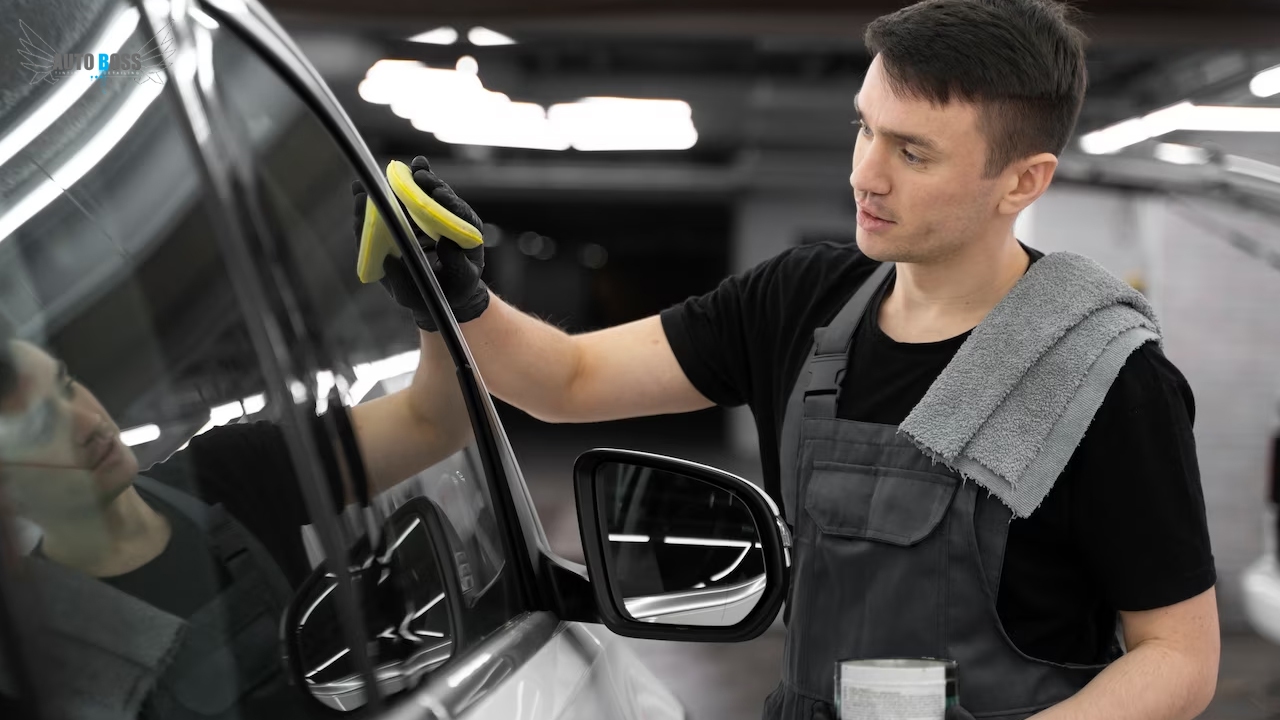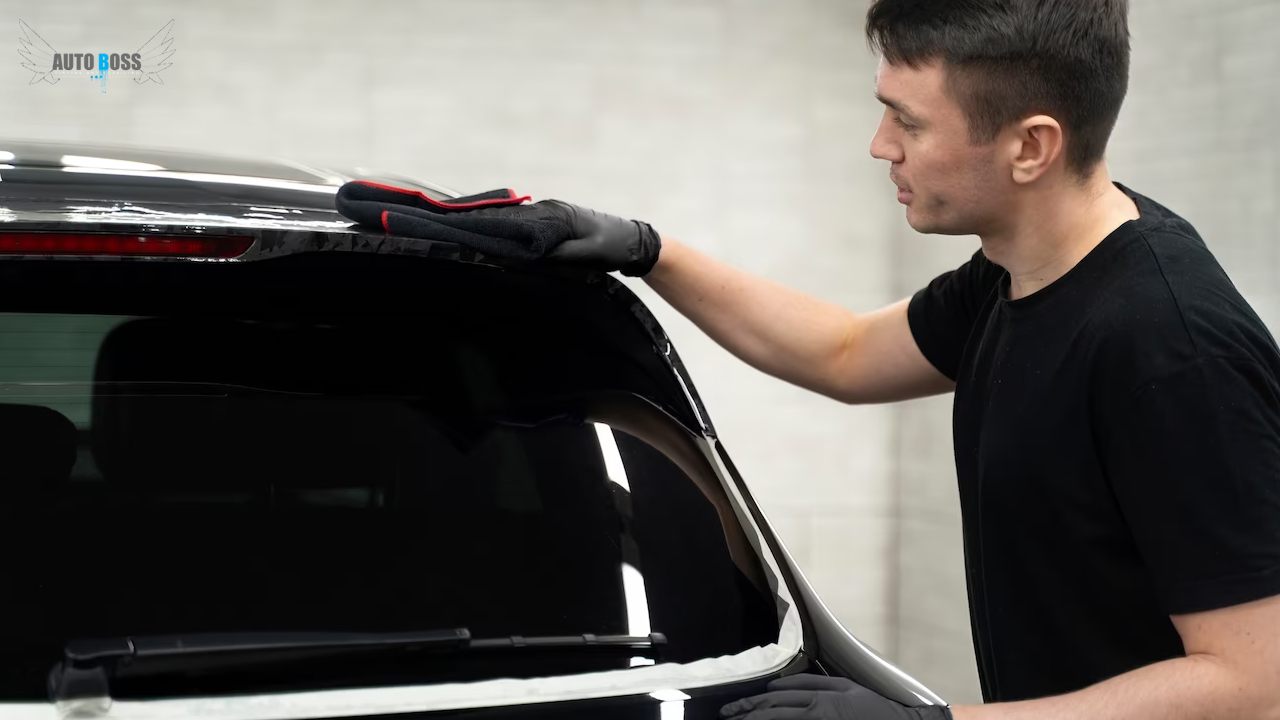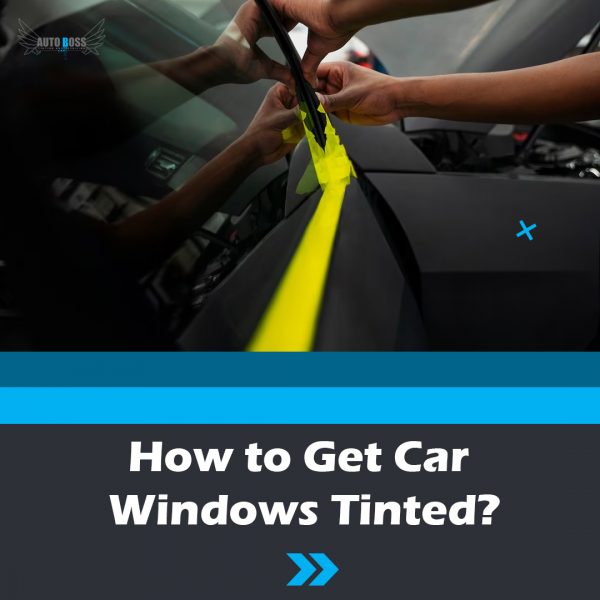Welcome to our comprehensive guide on how to get your car windows tinted! Are you tired of harsh sunlight, heat, and glare affecting your driving experience? Window tinting can provide you with the solution you need to enhance your driving comfort and protect your car’s interior from UV damage. In this blog post, we will provide you with expert tips and guidance on how to get car windows tinted. We’ll cover everything from choosing the right tinting film to finding a reputable installer in your area. Whether you’re a first-time car owner or a seasoned driver, this guide will help you make an informed decision about tinting your car windows. Let’s get started!
What Is Window Tinting?
Window tinting means the application of a thin layer of laminate film to a car inside the window to darken it. Window tinting protects a car’s interior from cracking and also prevents it from getting blurred and damaged by exposure to ultraviolet lights.
The quality and style of window tints vary. They differ primarily in how dark they are and how much light they let through. The tint percentage is used to represent this. A higher percentage means more light passes through the glass.

For example,
- 100 percent transparent, all light comes through
- 85 percent – most light gets through
- 35 percent – quite dark; most light is filtered
- 5 percent – extremely dark, nearly no light penetrates
The more light is filtered out; the more harmful stuff is filtered out, too. The darker it is, the cooler the car interior will be.
Benefits of Window Tinting
Window tinting is beneficial for car performance and protection. Here are various impressive benefits of window tinting for your car that you must know.
- Blocking UV rays: Some vitamin D is good for your health, but too much can be harmful and lead to aging skin and skin cancer. Even in your vehicle, it’s important to practice sun protection – skin cancers are more common on the left side since drivers are most directly exposed through a window on their left side.
- Reduce glare: We’ve all been driving and experienced glare from other vehicles when driving at night.
- Increase security: Tinted windows make it harder for thieves to see valuables and break into your car.
- Protect interior: Sunlight can discolor the upholstery inside your automobile. Tinting can help protect your investment and prevent leather and vinyl from fading.
- Solar heat rejection: Window film can block anywhere from 35%-65% of the solar heat that builds up inside a car – you’ll balance climate and comfort for everyone.
- Shattered glass protection: The film is designed to keep the glass from shattering if an object hits it. If there is an accident, passengers can be protected from broken glass shards, and thieves will find it more challenging to break.

Are Tinted Windows Legal In Ontario?
Depending on which province you reside in, rules on tinted windows are different. In some places, you can get your windows tinted; in others, it’s illegal. Here’s a look at the laws regarding tinted windows in Ontario:
- Windshield: No tint allowed
- Rear: Any tint allowed as long as the vehicle has both left and right side rear-view mirrors
- Front Side: 70% VLT or higher
- Back Side: Any Tint

Why Are There Laws Around Window Tinting?
One of the main reasons the country has laws regarding tinted windows is that police need to see through the front side windows to ensure everyone’s safety. Three reasons why there are laws around it are :
- They need to check for occupants wearing their seatbelts or if the driver is texting and driving.
- Anyone who reports an erratic driver needs to testify and confirm the identity of the driver who committed the infraction.
- Pedestrians and cyclists need to be able to make clear eye contact with drivers before proceeding.
If you are pulled over, some police will check if your vehicle has a legal tint by using a photometer to measure the percentage of light that goes through the window.

Professional Tinting vs DIY
There are two paths you can travel when choosing any window tint for cars. The first option and most popular is having a professional auto salon complete the tinting service. The other option is the do-it-yourself method. We recommend the former.
A professional shop will handle all the prep work, custom fit the window tint, apply it, and in some cases, offer a warranty for longevity.
With professional installations, the sky is virtually the limit – as are the tinting benefits.
Which Type of Window Tint is Right for Your Car?
If you’re thinking about installing a new tint film, you’ll have to make a few important decisions before pulling the trigger. A few of the important questions you need to ask to determine which window tint is right for your car include the following:
What is most important?
Different tints offer individual attributes. Some – like the entry-level dye window tint are mainly aesthetic – to make the windows appear darker on the outside. There are ceramic tinting products that give you the best of all worlds. So, before you decide which tinting is best – write down what attributes are important to your specific application.
What is your budget?
Obviously, the cost of the window tint and installation is another important factor to determine. The problem is – determining the cost of window tint is based on several variables, including:
The type of Tint:
The main factor that determines the price of window tint is the installation. The cost of the material itself is inexpensive. This is what often teases many car owners to attempt the DIY route. However, mistakes are usually made, and reordering new material, paying for more shipping, and the time to clean up adhesive just make it impractical.
Lower-grade window tints (such as the dye window tint) will be cheaper (not only in quality but in price), while advanced ceramic or carbon-based window tints will have a premium price. It’s similar to comparing ceramic coatings. Spraying on hybrids is cheaper than longer-lasting 9H ceramic coatings.
The cost of labor:
The second element that impacts your budget is the cost of labor. However, not all window tints are applied the same. Some will take more time and thus – have an increased labor cost. The good news is that professional auto salons will simplify the estimate process for you by providing a flat rate for the entire job.
How long are you keeping the vehicle?
The final question you’ll ask before choosing a window tint for cars is how long you plan on keeping the vehicle. It makes sense that you’d want to purchase a window tint that will last as you own your ride.
How are Car Tints Applied?
The window tint application process basically breaks down into a four-step process for the professional auto salon. If you’re looking for tips on how to install a DIY window tint, you’ve come to the right place.
Prep Work
As the saying goes – prep work makes the dream work. This is especially important when applying a new window film tint to your car, truck, or SUV. Once you pick the type of window tint, the tint percentage, and other custom factors, the installer will begin the process by prepping the windows that will be applied.
Prep work is always customized by the auto salon completing the tint installation based on a few variables. First, the condition of the existing window. If you have a new car – direct from the factory, the amount of grime or other cleaners/treatments are going to be less severe than an older vehicle. If you have a car with an existing window tint, it will have to be removed – which can be tricky.
The main objective of prep work is to ensure the installer has a perfectly clean canvas to work with. They use special cleaners and prep solutions to ensure there is no oil, grease, or film left on the window prior to application.
Measuring and Fitting
The second step is to measure the window receiving the tint and fitting it for a seamless installation. Most professional tint installers will complete most of the measuring, fitting, and final cutting on the outside of the window.
The process within this step will vary based on the exact type of window tint you’re purchasing. Some are pre-cut based on the manufacturer’s specs. Others must be custom measured, fitted, and cut by hand. There isn’t a benefit either way – especially if you’re having a certified window tint installer complete the service.
Application
Again, this step will vary based on the specific tint material and the techniques recommended by the tint manufacturer. Typically, the installation or application of the window tint on the inside is the quickest part of the overall tint job – as measuring, fitting, and cutting tend to take the most time.
The window tint is always applied on the inside of the window, so several variables, including the access to the windows, how much fabrication (or removing trim pieces and such) is needed, and simple ‘moving around space’ can extend the time for installation.
Professional auto salons will provide a transparent estimate based on your specific vehicle, the number of windows you want to tint, and any other expenses associated.
Curing
Before your car is handed over, the professional detailer will take the time to ensure everything is cleaned, the window film has cured, and you’re aware of any post-purchase restrictions. Most window tints require the car owner to not roll down windows for a day or two to ensure the adhesive has dried and fully bonded to the window.
Conclusion
As you can clearly see – there is a lot of information to take in when you’re looking for the best window tint for your car. The best advice we can offer is to always seek out the advice of a professional auto salon that offers window tinting services near you.
Car Window Tinting in Vaughan
We at Auto Boss Vaughan are happy to advise you on the pros and cons, explain different window tint benefits and costs, and help you make the right decision.
If you’d like to install window tints in Vaughan, visit our website and request a free consultation.
FAQs
What is window tinting?
Tinting a car’s window involves applying a thin layer of laminate film inside it to darken it. Besides protecting the interior of the car from cracking, it also prevents it from getting blurred and damaged by ultraviolet light.
How much does window tinting cost?
In general, window tinting costs between $100 and $500. A lot depends on what kind of film you choose and whether you choose a professional or a do-it-yourselfer.
Are tinted windows illegal?
Due to safety and security concerns, tinted windows are not allowed in some states and provinces. Most states do not allow tinting your entire windshield. Rather, they have regulations regarding the front, side, and rear window tinting.




